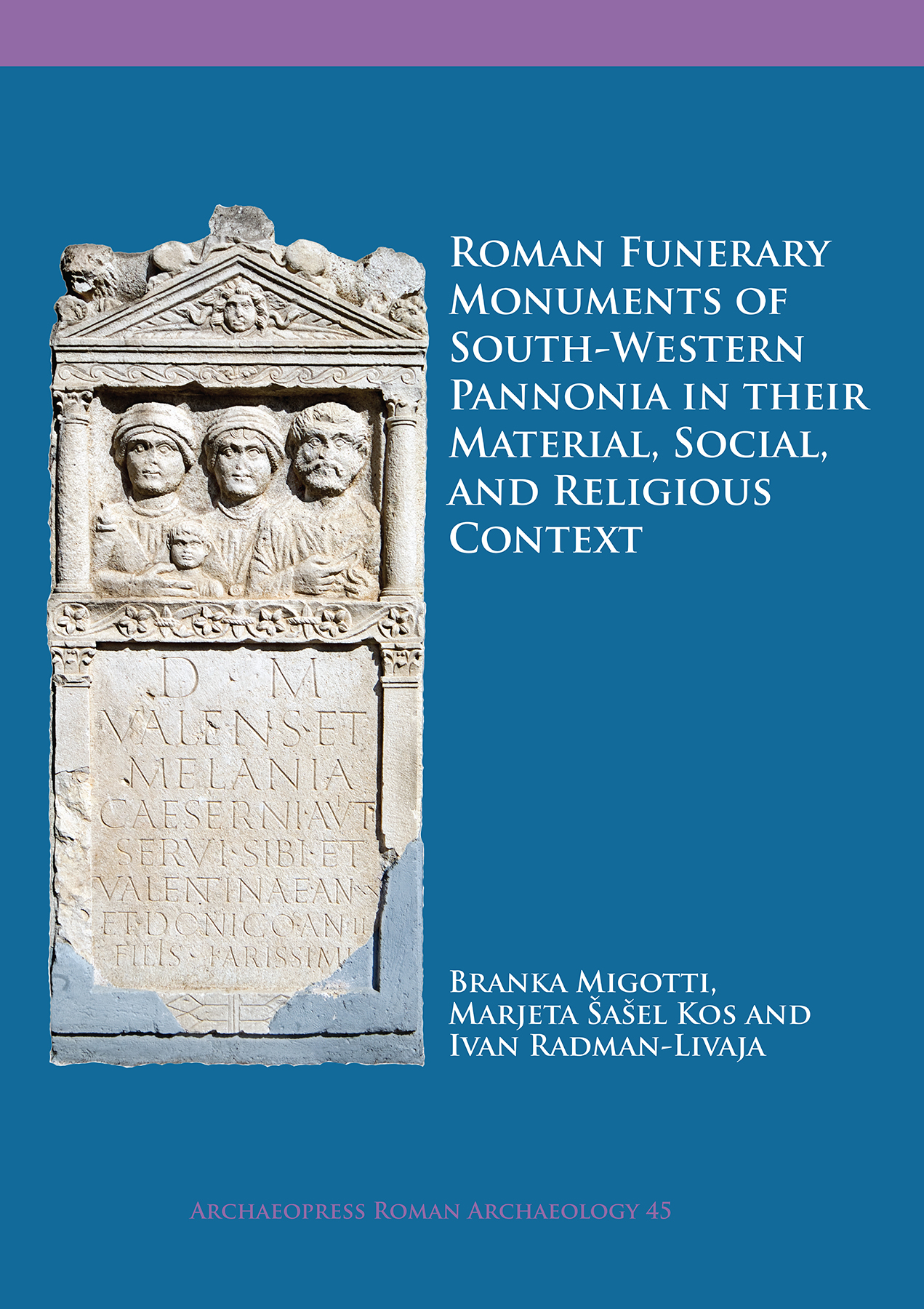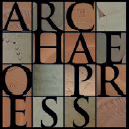
Publishing Scholarly Archaeology since 1997

Download Sample PDF
H 290 x W 205 mm
290 pages
308 figures (133 plates in colour)
Published Oct 2018
ISBN
Paperback: 9781789690217
Digital: 9781789690224
Keywords
Funerary Monuments; Roman; Pannonia; Croatia; Stelai; sarcophagi; tituli; Medallions; Buildings
Archaeopress Roman Archaeology 45
Roman Funerary Monuments of South-Western Pannonia in their Material, Social, and Religious Context
By Branka Migotti, Marjeta Sasel Kos Jamison, Iva Radman-Livaja
Paperback
£50.00
Includes PDF
PDF eBook
(personal use)
£16.00
PDF eBook
(institutional use)
£50.00
This book examines around 200 funerary monuments and fragments (stelai, sarcophagi, ash-chests, tituli, altars, medallions and buildings) from three Roman cities in the south-west part of the Roman province of Pannonia in the territory of north-west Croatia: colonia Siscia (Sisak) and municipia Andautonia (Ščitarjevo) and Aquae Balissae (Daruvar).
Contents
Foreword and Acknowledgments – by Branka Migotti; Introduction – by Branka Migotti; Chapter I Catalogues – by Branka Migotti and Marjeta Šašel Kos; Chapter II Discussion of the evidence – by Branka Migotti; Chapter III Geology and quarries – by Branka Migotti; Chapter IV Population of south-western Pannonia: Siscia, Andautonia, and Aquae Balissae – by Marjeta Šašel Kos; Chapter V The social impact of Roman soldiers in Siscia, Andautonia and Aquae Balissae – by Ivan Radman-Livaja; Bibliography; Abbreviations of epigraphic and onomastic corpora and Internet databases
About the Author
Branka Migotti was born in Zagreb (Croatia) in 1954 and took the following degrees from the Faculty of Philosophy of the Zagreb University: BA in Archaeology and the English Language in 1978, MA in 1985 and PhD in 1992, both in the field of early Christian archaeology of Dalmatia. She is currently employed at the Division of Archaeology of the Croatian Academy of Sciences and Arts in Zagreb as a scholarly consultant and Head of the Division, and she is a regular collaborator in the postgraduate study programme ‘Roman and early Christian archaeology’ at the Faculty of Philosophy in Zagreb. Her main fields of scholarly interests are early Christianity and the funerary archaeology of Pannonia, with emphasis on funerary monuments as evidence for social, material and religious aspects of life in the Roman province. | Marjeta Šašel Kos was born in Ljubljana (Slovenia) in 1952 and took the following degrees from the Faculty of Philosophy of the Ljubljana University: BA in ancient Greek and Archaeology in 1973 and 1974, respectively, MA in 1980 and PhD in 1986, both in the subject of Roman political history in the western Balkans as reflected in the works of the historians Cassius Dio and Herodian. She is currently employed at the Institute of Archaeology of the Slovenian Academy of Sciences and Arts as an academic adviser. She is member of the committee of the ‘Association Internationale d’Épigraphie Grecque et Latine’. Since 2005 she is a member of the Scientific Management Committee within the European Project ‘History and Archaeology of the Balkans’, coordinated by the University of Lyon. Her main fields of scholarly interests are the study of Roman political and religious history on the basis of written sources and epigraphic and onomastic evidence, mostly focused on the area of the western Balkans. | Ivan Radman-Livaja was born in Split (Croatia) in 1973, and took the following degrees from the Faculty of Philosophy of the Zagreb University: BA in Archaeology in 1996 and MA in 2002, the latter in the field of Roman military equipment in the Archaeological Museum in Zagreb. He took his doctor’s degree in Ancient History and Archaeology from the École Pratique des Hautes Études (Paris) in 2010. He is currently employed in the Archaeological Museum in Zagreb as a senior curator, and is a collaborator in the postgraduate study programme ‘Roman and early Christian archaeology’ at the Faculty of Philosophy in Zagreb. His main fields of scholarly interests are political, economic and social history of southern Pannonia based on the study of the Roman army and commercial lead tags from Siscia.Reviews
The book will find three readerships, those with research interests in Roman commemorative culture, the Roman stone trade, and the history and archaeology of Pannonia. It is an important and well-presented study, but different chapters will engage those different readerships to varying degrees.

 Add to wishlist
Add to wishlist
